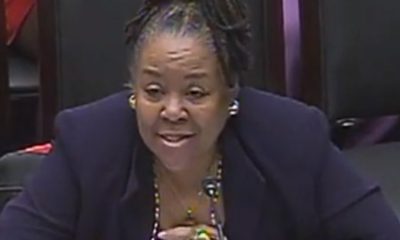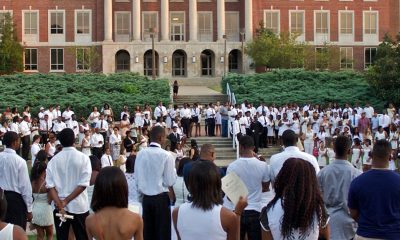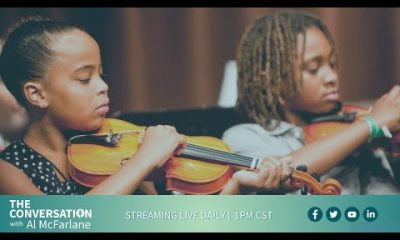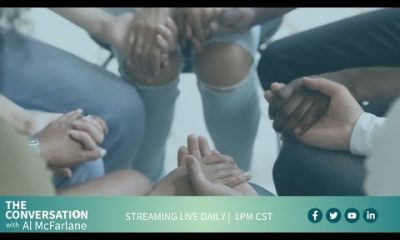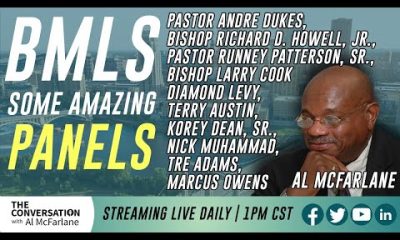Commentary
COMMENTARY: HBCUs are going where the Black Church can’t
FLORIDA COURIER — Several Historically Black Colleges and Universities (HBCUs) have quietly changed admissions policies to better reflect diversity in gender identification and sexual classification over the last decade.
Several Historically Black Colleges and Universities (HBCUs) have quietly changed admissions policies to better reflect diversity in gender identification and sexual classification over the last decade.
In the last two years, the sector’s single-sex delegation, Morehouse College and Spelman College, have broken free of a few of the chains of identity politics to help drag the Black America further into the 21st-century.
They’ve always been there
The logic behind HBCU’s policies of admitting students who identify as, or whom have transitioned to the opposite sex, is simple.
Transgender students have been enrolling in and graduating from our schools for years without disclosing their gender or their identity. Why clarify rules to prohibit what HBCUs have largely been unwilling and unable to stop for years prior to changing the bylaws to be more tolerant?
What message is sent by our schools by dragging their feet on sex and gender equity on our campuses, while working to remain as America’s conscience on racial equity? Would rejecting LGBTQ students make us stronger in our faith and traditions, or would it make us more like White people who reject us out of their interpretation of the same racial legacy?
HBCUs have the latitude and the legal obligation to constantly find ways to be a more perfect version of themselves. Now, several campuses are taking the bold step of proving themselves to be greater than the guidelines of their origins. HBCUs’ growing courage on this subject is a welcome lead role where the Black Church has (and almost has to) falter in its realm of being a control in the great American race experiment.
Schools are stronger
HBCUs and the Black Church are the two rails upon which Black democracy has always traveled to help us find the path to health, wealth and prosperity. But only one is strong enough, liberal enough and well-funded enough to support the evolution of our thinking on identity and survive the consequences of its best efforts.
In February, the Methodist Church conference voted by a slim margin to maintain its positions against non-heterosexual leadership in clergy, and prohibitions on gay marriage. Prior to the vote, several presidents of Methodist-affiliated HBCUs worked to build consensus around the church, better reflecting their campus profiles and teachings of religious tolerance.
HBCUs have become increasingly present in partnerships with LGBTQ organizations like the Human Rights Campaign and the National Black Justice Coalition. The ways in which HBCU students, faculty, staff and alumni can be kinder, more loving people are becoming more ingrained in our public conversations about HBCU advocacy.
Black people, however slow the pace, are getting better at understanding that gender and sexuality is more than what we’ve been taught as scholars and believers. But we still have much ground to make up for the years that brothers and sisters have suffered violence, isolation and maltreatment at our own hands for what we couldn’t understand.
We need more
We need more research, more space and more public conversation on how HBCUs can better reflect the diversity of our own communities. We need to build the context of what it is like to be a member of the Black LGBTQ community, and how sections of that community can live and prosper based upon geography, resources and religion.
Ideally, this would be joint work between HBCUs and the Black Church. But at this point in history, only one of our two most important community resources is strong enough to carry the cross of unburdening us of our own confusion and self-hatred.
Our schools may stand to lose a lot as a result of their work, but they deserve our support and credit for doing the work we have waited too long to deliver for our own people.
Jarrett L. Carter, Sr. is publisher of HBCU Digest (www.hbcudigest.com).
This article originally appeared in the Florida Courier.
Activism
Oakland Post: Week of April 24 – 30, 2024
The printed Weekly Edition of the Oakland Post: Week of April 24 – 30, 2024

To enlarge your view of this issue, use the slider, magnifying glass icon or full page icon in the lower right corner of the browser window. ![]()
Activism
Oakland Post: Week of April 17 – 23, 2024
The printed Weekly Edition of the Oakland Post: Week of April 17 – 23, 2024

To enlarge your view of this issue, use the slider, magnifying glass icon or full page icon in the lower right corner of the browser window. ![]()
Commentary
Opinion: Surviving the Earthquake, an Eclipse and “Emil Amok.”
Last Friday, a 4.8 magnitude earthquake shook New York City, reported as the “biggest earthquake with an epicenter in the NYC area since 1884” when a 5.2 quake hit. A bit bigger. The last quake similar to Friday’s was a 4.9 in 1783.Alexander Hamilton felt it — 241 years ago. That’s why New Yorkers were freaking out on Friday. They were in the room where it happens.
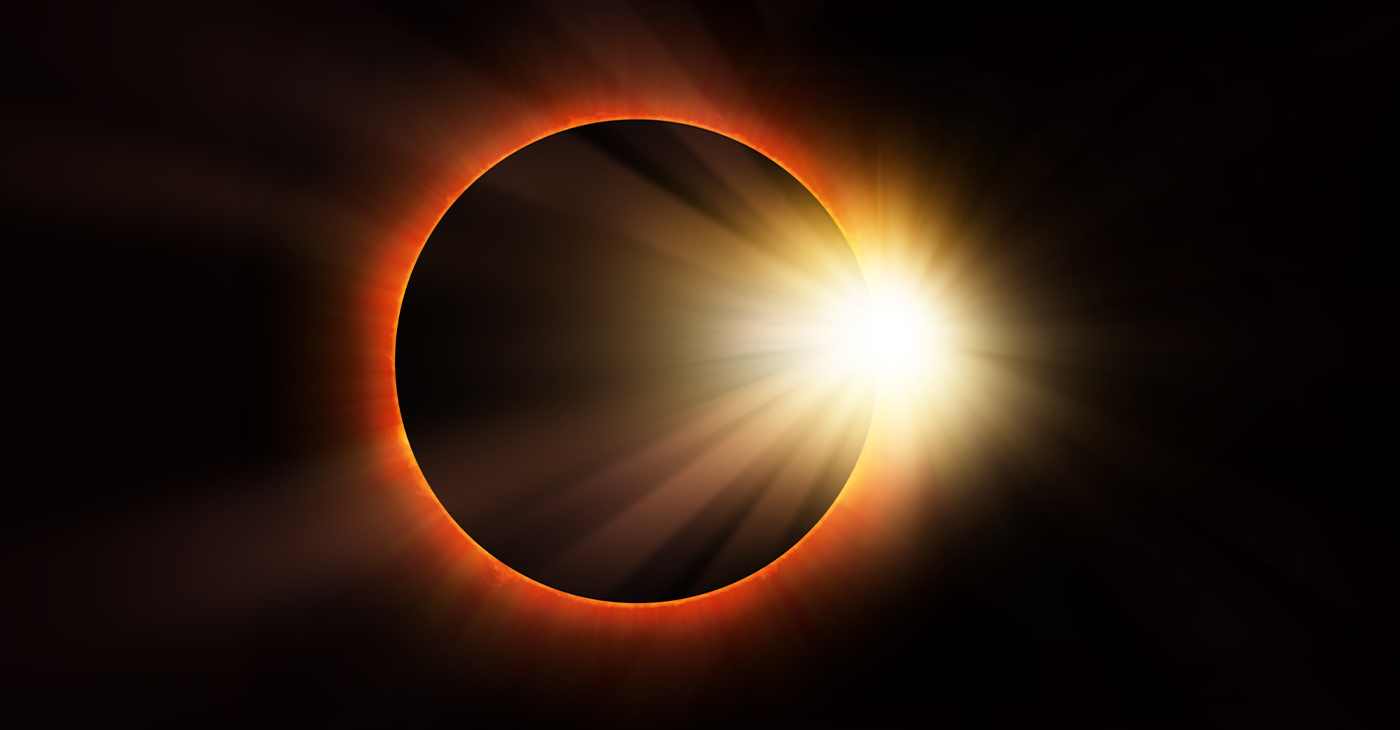
By Emil Guillermo
I’m a Northern Californian in New York City for the next few weeks, doing my one-man show, “Emil Amok, Lost NPR Host, Wiley Filipino, Vegan Transdad.”
I must like performing in the wake of Mother Nature.
Last Friday, a 4.8 magnitude earthquake shook New York City, reported as the “biggest earthquake with an epicenter in the NYC area since 1884” when a 5.2 quake hit. A bit bigger. The last quake similar to Friday’s was a 4.9 in 1783.
Alexander Hamilton felt it — 241 years ago.
That’s why New Yorkers were freaking out on Friday. They were in the room where it happens.
And it just doesn’t happen that often.
Beyonce singing country music happens more frequently.
When I felt New York shake last week, it reminded me of a time in a San Francisco TV newsroom when editors fretted about a lack of news an hour before showtime.
Then the office carpeting moved for a good ten seconds, and the news gods gave us our lead story.
On Friday when it happened in NYC, I noticed the lines in the carpeting in my room wiggling. But I thought it was from a raucous hotel worker vacuuming nearby.
I didn’t even think earthquake. In New York?
I just went about my business as if nothing had happened. After living near fault lines all my life, I was taking things for granted.
Considering the age of structures in New York, I should have been even more concerned about falling objects inside (shelves, stuff on walls) and outside buildings (signs, scaffolding), fire hazards from possible gas leaks, and then I should have looked for others on my floor and in the hotel lobby to confirm or aid or tell stories.
Of course, as a Californian who has lived through and covered quakes in the 4 to 6 magnitude range, I tried to calm down any traumatized New Yorker I encountered by taking full responsibility for bringing in the quake from the Bay Area.
I reassured them things would be all right, and then let them know that 4.8s are nothing.
And then I invited them to my consoling post-Earthquake performance of “Emil Amok, Lost NPR Host…”
It was the night of the eclipse.
ECLIPSING THE ECLIPSE
In New York City, the eclipse was about 90 percent visible. Good enough for me. Though a full solar eclipse is a celestial rarity, blockages of any sort aren’t generally celebrated. My one-man play is about growing up with the eclipsed history of American Filipinos and how I struggle to unblock all that.
For example, did you know the first Filipinos actually arrived to what is now California in 1587? That’s 33 years before the Pilgrims arrived in America on the other coast, but few know the Filipino history which has been totally eclipsed.
I was in Battery Park sitting on a bench and there was a sense of community as people all came to look up. A young woman sitting next to me had a filter for a cell phone camera. We began talking and she let me use it. That filter enabled me to take a picture of the main event with my iPhone.
For helping me see, I invited her and her boyfriend to come see my show.
Coincidentally, she was from Plymouth, Massachusetts, near the rock that says the year the Pilgrims landed in 1620.
In my show she learned the truth. The Pilgrims were second.
History unblocked. But it took a solar eclipse.
Next one in 2044? We have a lot more unblocking to do.
If you’re in New York come see my show, Sat. April 13th, 5:20 pm Eastern; Fri. April 19, 8:10 pm Eastern; and Sun. April 21st 5:20 pm Eastern.
You can also livestream the show. Get tickets at www.amok.com/tickets
About the Author
Emil Guillermo is a journalist and commentator. He does a mini-talk show on YouTube.com/@emilamok1. He wishes all his readers a Happy Easter!
-

 Activism4 weeks ago
Activism4 weeks agoOakland Post: Week of March 27 – April 2, 2024
-

 #NNPA BlackPress4 weeks ago
#NNPA BlackPress4 weeks agoBeloved Actor and Activist Louis Cameron Gossett Jr. Dies at 87
-

 Community1 week ago
Community1 week agoFinancial Assistance Bill for Descendants of Enslaved Persons to Help Them Purchase, Own, or Maintain a Home
-

 Activism3 weeks ago
Activism3 weeks agoOakland Post: Week of April 3 – 6, 2024
-

 Business2 weeks ago
Business2 weeks agoV.P. Kamala Harris: Americans With Criminal Records Will Soon Be Eligible for SBA Loans
-

 Activism2 weeks ago
Activism2 weeks agoOakland Post: Week of April 10 – 16, 2024
-

 Community2 weeks ago
Community2 weeks agoAG Bonta Says Oakland School Leaders Should Comply with State Laws to Avoid ‘Disparate Harm’ When Closing or Merging Schools
-

 Community7 days ago
Community7 days agoOakland WNBA Player to be Inducted Into Hall of Fame



